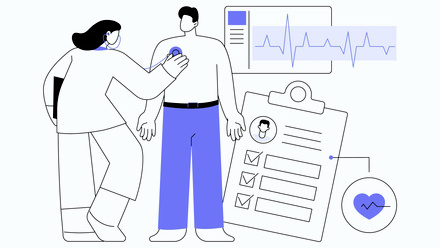What GoJoe’s data says about employee health habits and how employers can support them
What’s stopping people getting fitter and healthier?
It all comes down to behaviours: our rhythms and routines and how we find the motivation to get active during our busy lives.
If we do, the impact for individuals, as well as the organisations they work for can be huge.
We’ve analysed our user data here at GoJoe to find five trends and insights to help businesses better support their teams on their health and fitness journey.
When are employees exercising?
On weekdays, our data shows the most popular times to exercise are before work (6am-9am), during a lunch break (12pm-2pm) or straight after work (5pm-8pm).
Perhaps no great surprises there but the lunchtime slot is as popular as the evening and more popular than the mornings. So the desire to use lunches to exercise, release stress and break up the workday with an endorphin hit is high.
Employees, if given the time and resources to scratch that midday activity itch could well be more productive but also more appreciative of employers who allow them this balance.
Employers may consider offering flexible hours, more hybrid working, Or even access to gym or shower facilities to see a real impact.
How are they managing their time?
Our data points cover a wide spectrum of activities. Let’s focus on those that best fit into a lunch break.
The typical GoJoe user spends around 45 minutes on a run or a walk. This is similar for strength training (50 minutes) and HIIT workouts (45 minutes).
We see a 36% increase in the duration of a typical run at the weekend, plus a 23% increase in time spent walking. This suggests people may be curbing their activity during the working week due to restrictive working hours.
As above, employers could consider creating more space in the day for exercise to further help their teams?
Why do people start exercising?
Our data shows that getting sedentary employees – those whose weekly activity levels fall below government advice - to start being active again is very achievable.
We’ve seen countless businesses do it.
When employees are motivated, they get moving. It’s that simple.
For us, our virtual team challenges act as a catalyst for that, with an average of 74% of previously inactive employees exceeding WHO guidelines during a challenge, with many increasing their activity levels by over 400%.
This is not only beneficial in terms of the intangibles of culture and productivity but also direct costs linked to private medical insurance (PMI) premiums, absenteeism and presenteeism.
Giving employees a reason to exercise is key to raising activity levels.
For us, the secret sauce is removing all barriers to participation (age, gender, language, location, activity type) and creating meaningful, social motivation to get active.
How do employees (and employers) benefit from getting active?
For example, after a GoJoe challenge, on average:
- 63% report an improvement in physical well-being
- 60% report an improvement in mental well-being
- 54% report an improvement in social well-being
These huge improvements are seen in just 2-6 weeks. Over an extended period this trend suggests healthy lifestyles can have an enormous impact individual health as well as business performance and bottom line.
What are today’s trending activities?
Walking is the clear winner, representing around 50% of activity in the past year. Running, strength, cycling and HIIT make up the rest of the top 5 – all activities which can fit into a lunch break if circumstances allow.
But we’re also seeing an interesting recent trend emerge. In the last three months, the ‘other’ category, that aren’t on our list of 50+ activities, has expanded to the point that it is pushing HIIT out of fifth place.
It’s clear that people are open to exploring new types of activity, be that stretching, climbing stairs, or Zumba. And this is a boon for employers looking to support their teams in creative ways.
So how to do it? From our experience, removing barriers such as cost, time and tech is a huge motivator. As is creating a community of like-minded folk to do these things with, either in person or digitally.
To learn more about GoJoe and how we help businesses save money and get their teams fitter and healthier, visit GoJoe.com or book a demo.
Supplied by REBA Associate Member, GoJoe
Using the power of health and fitness, GoJoe improves wellbeing, drives engagement and culture and saves organisations money while they do it. Plus, they make it fun, as exercise should be.








